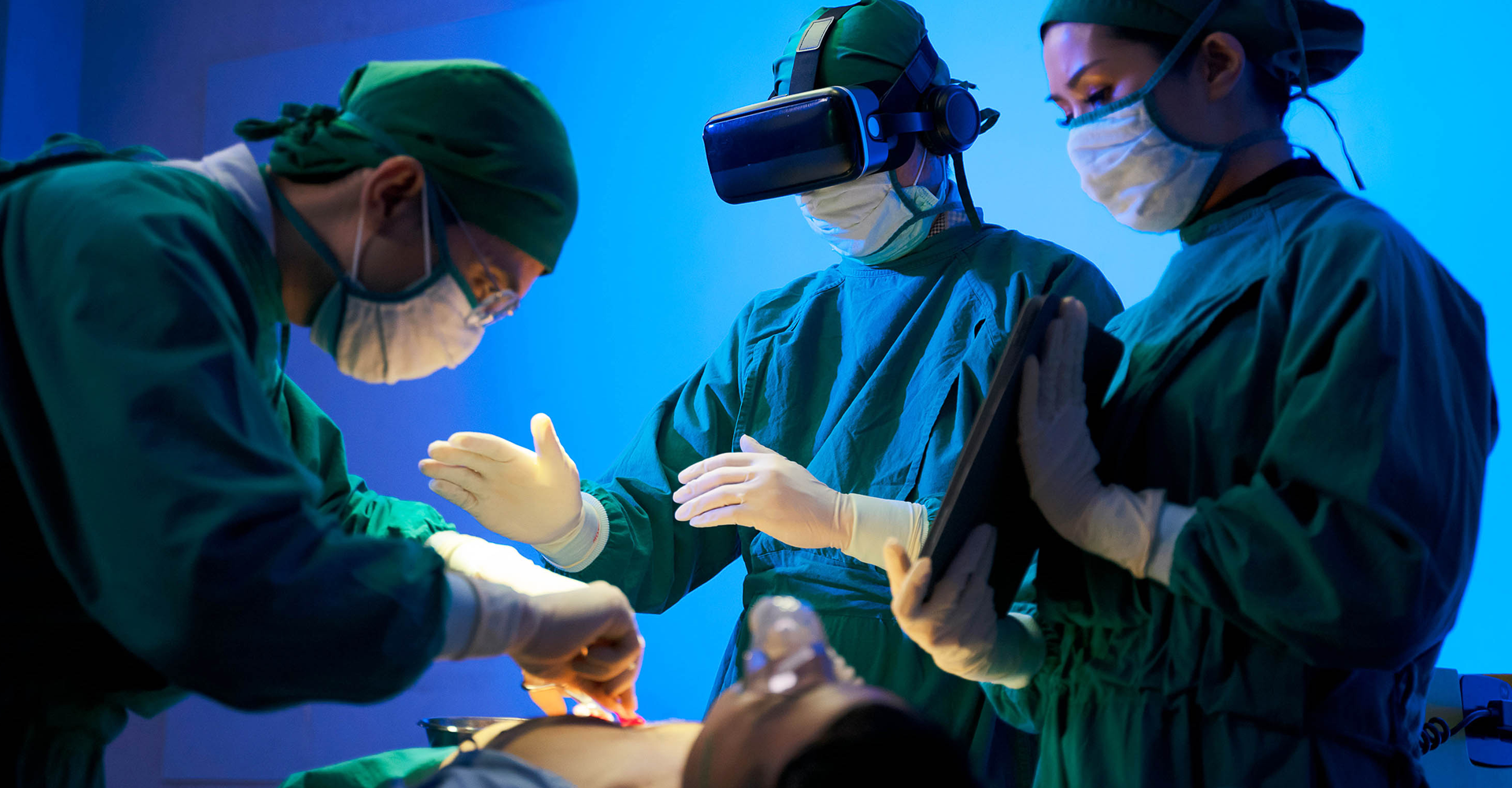Metaverse and Virtual Reality; Transforming Health Care with 3D Detailed Anatomical Renderings.
Metaverse is a 3D virtual reality platform that enables you to create, connect, and interact with others in a digital world, the technology that is no longer just for gaming and entertainment. It is used in various industries to improve productivity and efficiency, such as education, training, healthcare, or real estate. One such industry is Health Care, where 3D technology allows surgeons from opposite sides of the globe to plan an operation virtually, allowing them to examine detailed renderings of a patient’s brain.
Universities like Case Western Reserve are also using this technology to learn anatomy, replacing the traditional, more costly method of cadavers. Not only have researchers found that the software helps medical students learn twice as fast and retain knowledge longer, but it may open this education up to other groups who wouldn’t have had access to this before. Since most Metaverse platforms are open-source, it also allows for developing applications that are custom-tailored to your industry or requirements.
Whether you are a VR enthusiast involved with technical training, looking to create a new VR application, or want to use Metaverse platforms for an existing one, this article will hopefully give you some additional insight on Metaverse and its capabilities.
Metaverse, Medicine, and Training
Metaverse, medicine, and Training are three areas starting to converge in a virtual reality world that is becoming increasingly realistic and immersive. In one of the recent INSIDE THE METAVERSE segments on NBC, Jake Ward explored the 3D technology allowing three surgeons from opposite sides of the globe to plan an operation virtually, allowing them to examine detailed renderings of a patient’s brain.
Medicine is the science and practice of diagnosing, treating, preventing disease, and Healthcare is the delivery of medical services to individuals. As the Metaverse becomes more realistic, it will become an increasingly powerful tool for delivering healthcare services. For example, doctors can use the Metaverse to provide interactive instruction to patients. Patients can use the Metaverse to receive treatment from remote doctors. And insurance companies can use the Metaverse to offer virtual health checkups. The convergence of these three areas will profoundly impact how we deliver and receive healthcare services.
Case Western Reserve University example
Metaverse is a term coined by Neal Stephenson in his science fiction novel “Snow Crash” and refers to a virtual reality world that people can explore and interact with. Metaverse has become a popular concept recently, with many companies and organizations working to create their Metaverse platforms. One of the most notable examples is Case Western Reserve University, which has created a Metaverse platform called CWRUv. CWRUv is a virtual world that allows users to explore the campus, attend classes, and participate in events. The platform also includes various other features, such as a virtual library and an interactive map of the Cleveland area.
Some people think of the Metaverse as a virtual world like Second Life or World of Warcraft. But it’s much more than that. The Metaverse is a 3D representation of the Internet where people, businesses, and ideas interact in a virtual space. Metaverse Laboratory at Case Western Reserve University is one of the first academic labs dedicated to research and development in the Metaverse. The lab is working on everything from creating avatars that look and act like real people to developing new ways to conduct business meetings and collaborate on projects. And they’re doing it all in a 3D virtual environment. So if you’re looking for a place to explore the Metaverse, Case Western Reserve University is a great place to start. Who knows, you might even end up learning something along the way.
Potential Applications of this Technology Beyond Medical School Students.
While it is still in its early stages, Metaverse technology has the potential to revolutionize many aspects of our lives. It will change the way we interact with each other and the world around us. For now, Metaverse is most commonly associated with medical applications, such as helping students to visualize and interact with complex anatomical models.
Still, it can also be used for a variety of other purposes. For example, Metaverse technology could be used to create virtual reality simulations for corporate training purposes. It could also create immersive, interactive experiences for entertainment, social networking, multiplayer gaming, and even business meetings and events. The possibilities are endless. With Metaverse technology, we are limited only by our imagination, and only time will tell what other potential applications of Metaverse technology we will see in the future.
If you’re interested in learning more about how Metaverse technology can be used to transform healthcare, or if you have any questions about Virtual Reality Application Development in Metaverse, please visit our website and contact our Creative Team at IMMIX Productions. We would be happy to answer any of your questions and help you develop your own VR application to enhance employee training, product visualization, or client experience.
